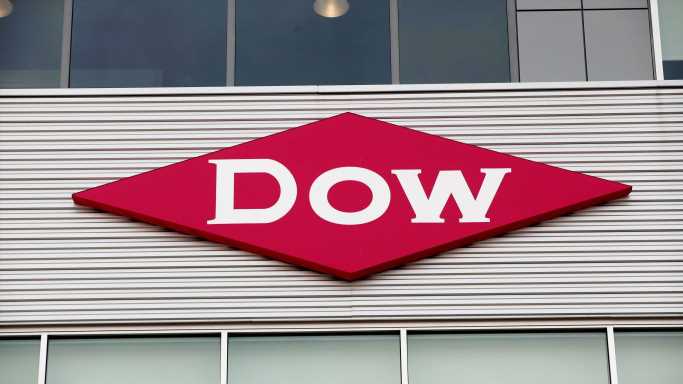Dow Inc (NYSE:DOW) is a large chemical manufacturer with market-leading positions in plastic products. The company is in the Dow Jones Industrial Average (DJIA), and because of its high dividend yield, it is one of the Dogs of the Dow in 2023.
The company’s high dividend yield of nearly 5% combined with low valuation makes it attractive for income investors. Additionally, the dividend safety is solid. Dow may have a difficult 2023 because of a slowing economy and lower house and auto sales, but it should do well over extended periods, making it a buy.
Overview Of Dow
Dow Inc (NYSE:DOW) is one of the biggest global chemical companies. The company has grown with acquisitions. Most recently, in 2015, it merged with DuPont, creating DowDuPont, and subsequently, the new entity acquired the remaining interest in DowCorning. In 2019, Dow Dupont separated into Corteva (NYSE:CTVA), Dow (DOW), and DuPont du Nemours (NYSE:DD).
Today, Dow sells plastics, coatings, feedstock, etc., through three operating segments: Packaging & Specialty Plastics, Industrial Intermediates & Infrastructure, and Performance Materials & Coatings.
The firm has the No. 1 market share in the United States and Canada for polypropylene glycol, polyols, acrylic binders, and siloxanes & silicones. It also has leading positions in other products in Latina Americ, Asia Pacific, and Europe & Middle East.
Total revenue was $54,968 million in 2021 and $59,407 million in the past twelve months.
Selected Data for Dow (NYSE)
| Ticker | DOW |
| Market Cap | $39.83 billion |
| Stock Price | $56.60 |
| Dividend (FWD) | $2.80 |
| Dividend Yield | 4.95% |
| P/E Ratio (FWD) | 8.88X |
Source: Data from Portfolio Insight (as of January 20, 2023)
Dow’s Dividend And Dividend Safety
The new Dow has a short operating history. The dividend was raised once in 2020 and has been held constant since then. The company paid ~75% of net operating income in dividends and is planning to maintain a payout at 45% of operating net income.
Moreover, Dow is lowering leverage and interest expense. In addition, Dow’s revenue and earnings per share will probably be lower in 2023 and 2024 than in 2022. Thus, we are not expecting an increase in the immediate future.
The forward dividend rate is $2.80 per share; the dividend yield is ~4.95% at the current price, near the value for the past two years. But it is nearly three times the S&P 500 Index’s average yield.
Dow has acceptable dividend safety metrics from the perspective of earnings, free cash flow (FCF), and debt.
Based on adjusted earnings, the forward payout ratio is about 43.8% based on the yearly dividend payout of $2.80 per share and estimated diluted adjusted earnings per share of $6.40 in 2023. Our desired value is 65% suggesting the Dow’s dividend is safe with room for growth.
The dividend is also safe from the standpoint of FCF. In the trailing twelve months, FCF was about $5,330 million. The common dividend required $2,023 million, giving a dividend-to-FCF ratio of about 38%, a little more than half of our threshold value of 70%, implying the dividend is safe.
Debt is not a primary concern for dividend safety. At the end of Q3 2022, Dow held ~$2,562 million in cash, cash equivalents, and marketable securities. The company had $439 million in short-term and current long-term debt and $12,227 million in long-term debt.
But debt is not a danger for the dividend with a leverage ratio of 1.09X and interest coverage of more than 11X. Furthermore, Dow has a BBB/Baa1 lower medium investment grade credit rating, providing more confidence.
Competitive Advantage, Risks, and Valuation
As one of the largest global chemical companies, Dow’s advantage extends to size and scale efficiencies smaller companies cannot match. The firm has cost advantages in a business where margins are thin, especially when oil and natural gas prices are high. Also, the leading market position in multiple product lines reinforces its standing as the go-to company.
Dow faces risks with commodity prices. First, high oil and gas prices will compress margins. Next, as a chemical producer and processor, environmental concerns and the risk of spills are higher. Emissions, water pollution, and soil contamination are headline risks and may bring regulatory scrutiny.
Dow is undervalued. At the recent stock price, the company trades at a forward price-to-earnings ratio of about 8.9X, well below the broader market average. Additionally, the dividend yield is higher than the market’s average. As a result, Dow may be an opportunity to buy low and add to a portfolio of income stocks.
This article originally appeared on ValueWalk
Sponsored: Tips for Investing
A financial advisor can help you understand the advantages and disadvantages of investment properties. Finding a qualified financial advisor doesn’t have to be hard. SmartAsset’s free tool matches you with up to three financial advisors who serve your area, and you can interview your advisor matches at no cost to decide which one is right for you. If you’re ready to find an advisor who can help you achieve your financial goals, get started now.
Investing in real estate can diversify your portfolio. But expanding your horizons may add additional costs. If you’re an investor looking to minimize expenses, consider checking out online brokerages. They often offer low investment fees, helping you maximize your profit.
Source: Read Full Article
-
Zelenskiy calls on West to warn Russian not to blow up dam
-
Before the Bell: Intel Catches a Bid, Disney Punks DeSantis
-
TFF Pharma Reveals Positive Initial Data From Ongoing Phase 2 Trials Of TFF VORI And TFF TAC
-
3 Payment Stocks Gaining From Improving Consumer Sentiment
-
These Are The Five Best And Worst Performing Large-Cap Stocks In Q3 2022

